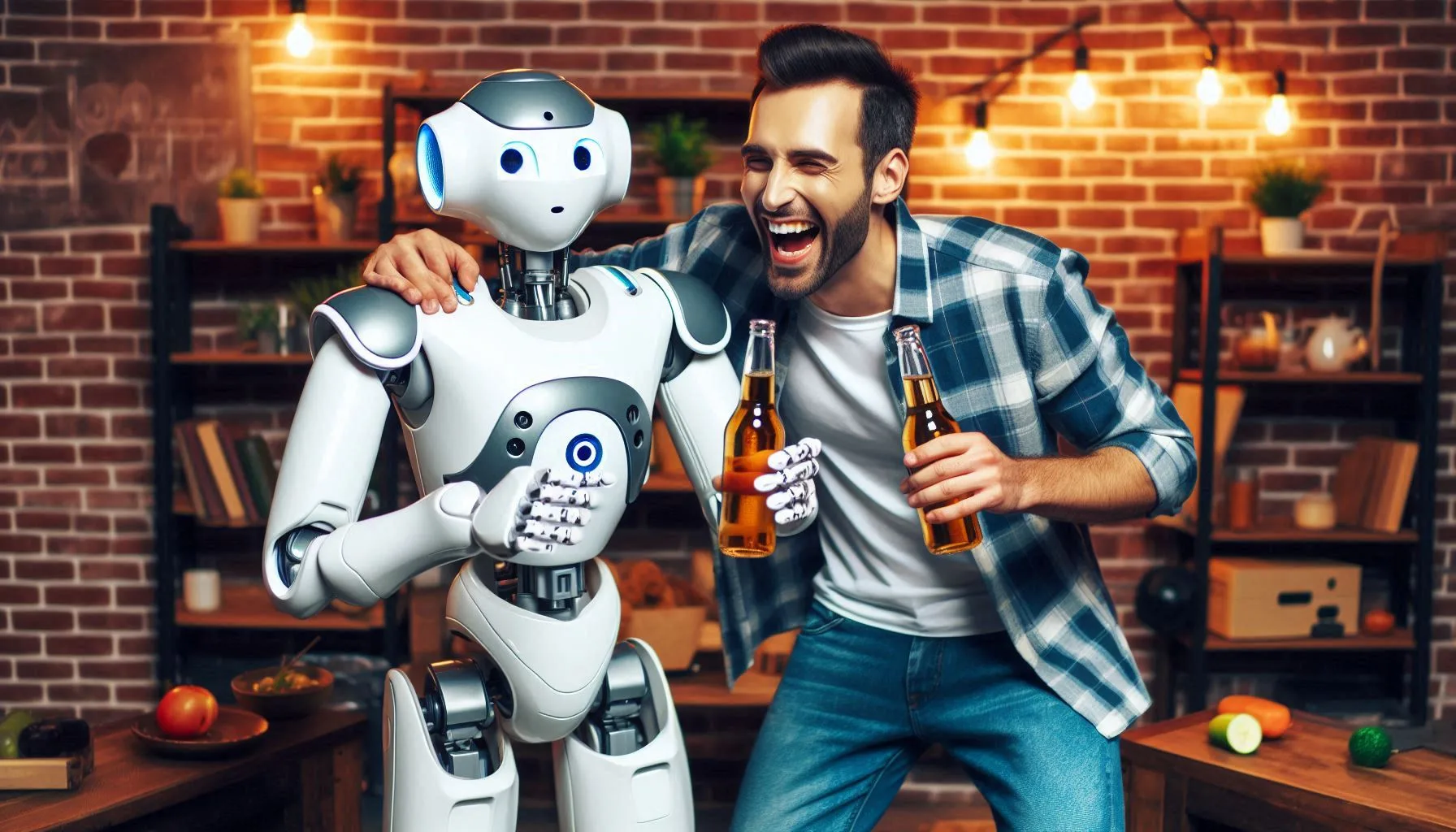The world of robotics stands at a pivotal moment. Humanoid robots emerge as groundbreaking innovations that will reshape our daily lives. These remarkable machines combine cutting-edge technology with human-like appearance and movements. This advancement marks a new chapter in human-robot interaction.
Understanding Humanoid Robots
Humanoid robots feature designs that mirror human body structure. These robots include a head, torso, two arms, and two legs. Most humanoid robots stand between 150 and 180 centimeters tall. Their weight varies based on materials and components.
Engineers build these robots to work alongside humans. Their human-like shape serves a practical purpose. Humanoid robots navigate environments designed for people. They use tools made for human hands. This design choice maximizes their usefulness in our world.
Core Technologies Driving Humanoid Development
Advanced Sensors and Perception
Modern humanoid robots rely on sophisticated sensor systems. These sensors help robots understand their surroundings. Key components include:
- Light Detection and Ranging (LiDAR) sensors
- Depth cameras
- Force sensors
- Touch-sensitive skin
- Microphones
- High-resolution cameras
These sensors create a detailed picture of the environment. Robots process this data in real-time. This ability lets them respond to changes quickly and safely.
Computer Vision and Image Processing
Computer vision gives humanoid robots their ability to see. Advanced algorithms process visual data from cameras. These systems can:
- Recognize faces and expressions
- Identify objects
- Track movement
- Read text
- Analyze scenes
- Detect obstacles
Modern image processing uses deep learning networks. These networks train on millions of images. This training helps robots understand visual information like humans do.
Artificial Intelligence and Machine Learning
AI forms the brain of humanoid robots. Multiple AI systems work together to control different functions. These include:
- Decision-making algorithms
- Pattern recognition
- Natural language processing
- Motion planning
- Learning from experience
Machine learning helps robots improve over time. They learn from their interactions with humans. This capability makes them more effective assistants.
Movement and Motor Control
Precise motor control makes humanoid movements possible. Complex systems manage:
- Balance control
- Walking patterns
- Arm movements
- Fine motor skills
- Force control
- Position sensing
Advanced actuators power these movements. These devices convert electrical energy into mechanical motion. Modern actuators provide smooth, precise control.
Applications and Capabilities
Healthcare Assistance
Humanoid robots show great promise in healthcare. They can:
- Help lift and move patients
- Deliver medical supplies
- Monitor vital signs
- Assist with rehabilitation exercises
- Provide companionship to elderly patients
- Support medical staff
Their strength and tireless nature make them valuable healthcare workers. They reduce physical strain on human staff.
Manufacturing and Industry
Industrial settings benefit from humanoid robots. These robots excel at:
- Assembly line work
- Quality control inspection
- Maintenance tasks
- Dangerous material handling
- Tool operation
- Warehouse management
Their human-like form lets them use existing equipment. This feature reduces the need for specialized robot tools.
Home Assistance
Humanoid robots will transform home life. They can perform various tasks:
- Cleaning and organizing
- Cooking assistance
- Laundry management
- Garden maintenance
- Security monitoring
- Pet care
Their ability to learn household layouts makes them efficient helpers. They adapt to different home environments easily.
Education and Research
Educational institutions use humanoid robots for:
- Teaching assistance
- Research projects
- Student engagement
- Programming education
- Human-robot interaction studies
- STEM demonstrations
These robots help students learn about technology. They also advance our understanding of human-robot cooperation.
Technical Challenges and Solutions
Balance and Mobility
Walking presents complex challenges for humanoid robots. Engineers solve these through:
- Dynamic balance systems
- Advanced gyroscopes
- Pressure sensors
- Real-time adjustment algorithms
- Energy-efficient movement
- Shock absorption
These solutions help robots move naturally. They prevent falls and maintain stability.
Power Management
Energy efficiency remains crucial for humanoid robots. Current solutions include:
- High-capacity batteries
- Power optimization
- Smart power management
- Quick-charging systems
- Energy harvesting
- Efficient motors
These advances extend operating times. They make robots more practical for daily use.
Safety Systems
Robot safety requires multiple protection layers. Key safety features include:
- Emergency shutdown systems
- Collision detection
- Force limiting
- Speed control
- Safe zones
- Human detection
These systems protect both robots and humans. They enable close human-robot collaboration.
Future Developments
Enhanced Human-Robot Interaction
Future humanoid robots will feature improved interaction capabilities:
- Better speech recognition
- Natural conversations
- Emotion understanding
- Context awareness
- Gesture recognition
- Social intelligence
These advances will make interactions more natural. Robots will better understand human needs.
Advanced Materials
New materials will improve robot performance:
- Lighter composites
- Flexible electronics
- Smart materials
- Self-healing components
- Improved actuators
- Better sensors
These materials will make robots stronger and more durable. They will also reduce production costs.
Artificial General Intelligence
AGI development will transform humanoid robots:
- Better problem-solving
- Creative thinking
- Adaptive learning
- Complex decision-making
- Improved autonomy
- Human-like reasoning
This technology will make robots more capable assistants. They will handle complex tasks independently.
Impact on Society
Workforce Changes
Humanoid robots will affect employment patterns:
- New job creation
- Skill requirements changes
- Work environment improvements
- Productivity increases
- Safety improvements
- Career opportunities
These changes will reshape many industries. They will create new opportunities for workers.
Social Integration
Society must prepare for robot integration:
- Public acceptance
- Legal frameworks
- Ethical guidelines
- Safety standards
- Privacy protection
- Social norms
These factors will determine integration success. They require careful consideration.
Economic Effects
Humanoid robots will impact the economy:
- Productivity gains
- Cost reductions
- New business models
- Market opportunities
- Investment patterns
- Innovation acceleration
These changes will create economic opportunities. They will drive technological progress.
Ethical Considerations
Privacy Protection
Robot deployment raises privacy concerns:
- Data collection limits
- Information security
- Personal space respect
- Surveillance issues
- Consent requirements
- Data ownership
Clear guidelines will protect individual privacy. They will build public trust.
Decision-Making Authority
Robots must follow clear decision rules:
- Authority limits
- Override procedures
- Emergency protocols
- Accountability measures
- Transparency requirements
- Human oversight
These rules ensure safe robot operation. They protect human interests.
Social Responsibility
Robot development must consider social impacts:
- Employment effects
- Cultural sensitivity
- Social inclusion
- Environmental impact
- Resource use
- Sustainability
Responsible development supports society. It ensures long-term benefits.
Conclusion
Humanoid robots represent a technological revolution. They combine multiple advanced technologies. These robots will transform many aspects of life. Their development continues at a rapid pace.
Success requires careful planning. We must address technical challenges. Social and ethical considerations need attention. With proper development, humanoid robots will become valuable assistants.
The future holds exciting possibilities. Humanoid robots will help solve many problems. They will create new opportunities. Their impact will benefit society. This technology marks a new chapter in human progress.
Continued research drives improvements. New applications emerge regularly. The field advances quickly. Humanoid robots will soon play crucial roles in daily life. They represent the next step in human-machine cooperation.




